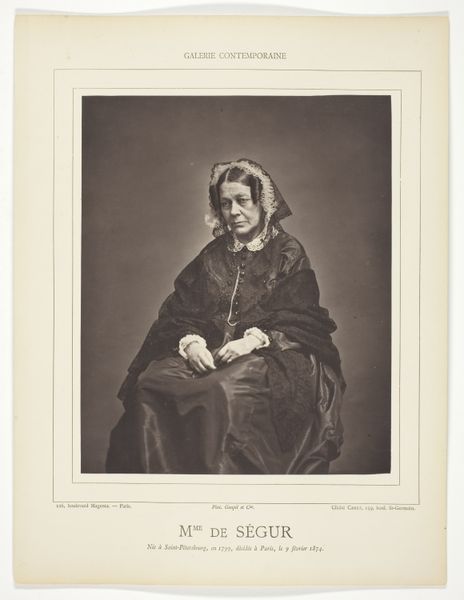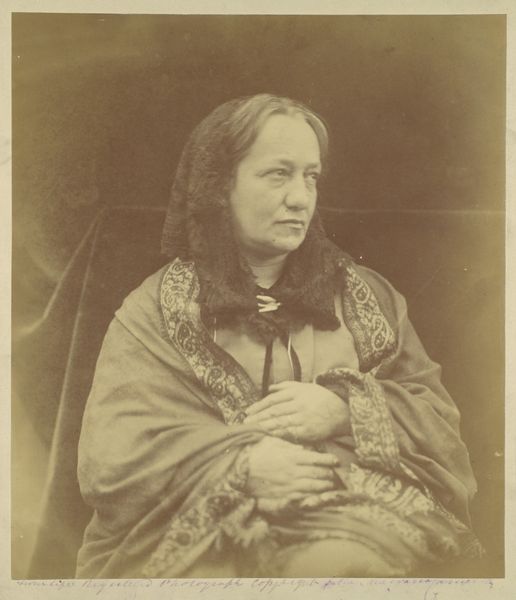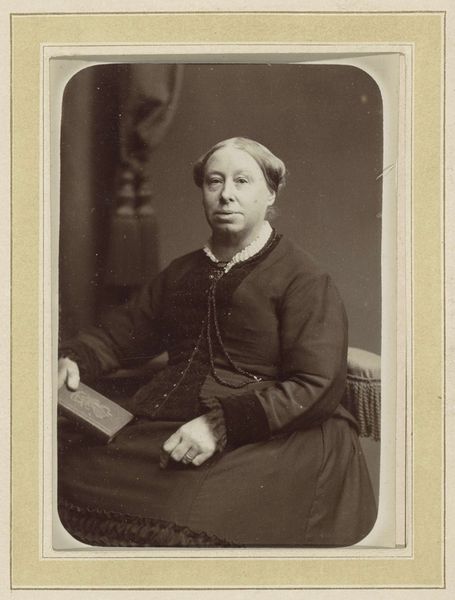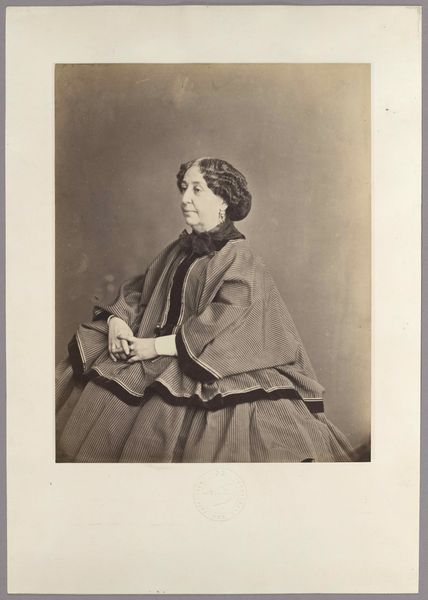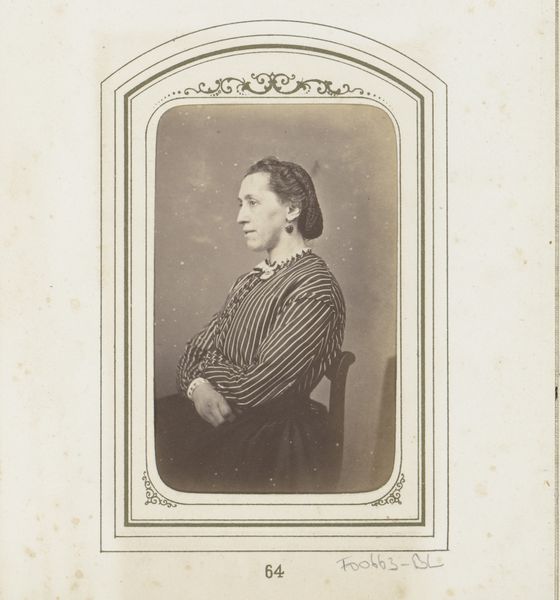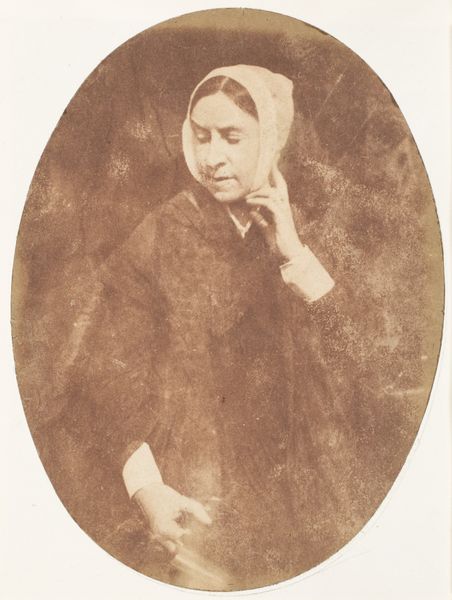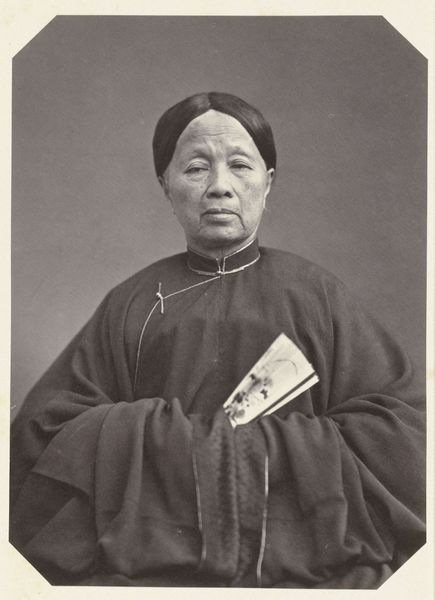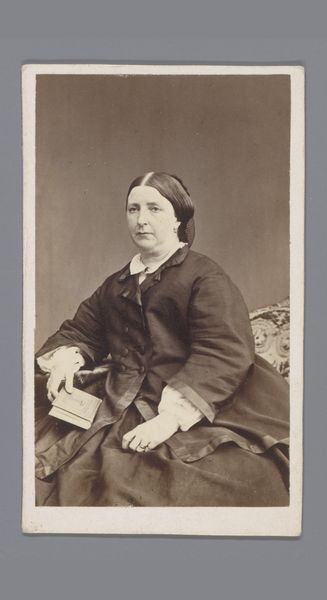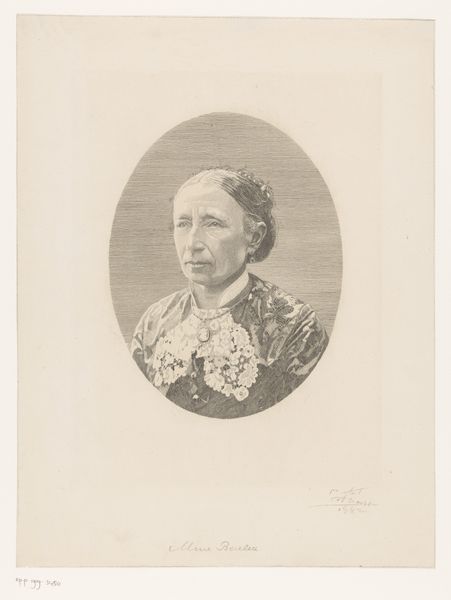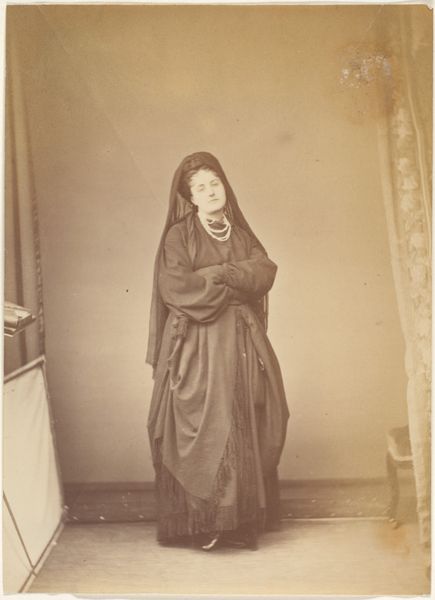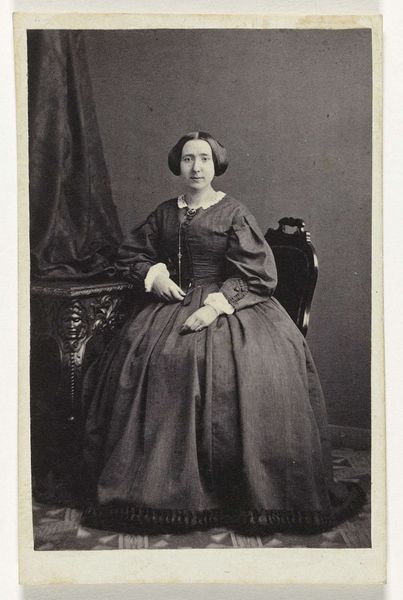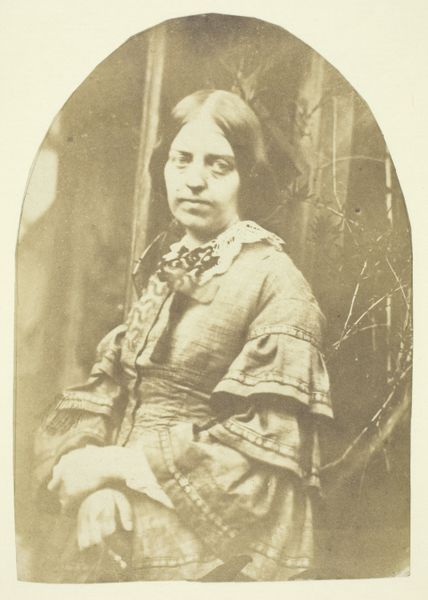
Dimensions: 23.5 × 18.2 cm (image/paper); 34.3 × 26.2 cm (mount)
Copyright: Public Domain
Curator: Let's turn our attention now to this intriguing portrait, Madame Pape-Carpantier, a daguerreotype printed on paper, attributed to Nadar and created sometime between 1853 and 1878. It is part of the collection at the Art Institute of Chicago. Editor: My immediate sense is of formidable presence. The woman dominates the frame; her dark clothing contrasts subtly with the neutral backdrop. I see strength, determination etched into the planes of her face, and the careful placement of her hands conveys power. Curator: Absolutely. Observe the almost geometrical precision of the composition. The dark mass of her figure is counterbalanced by the stack of books on the right, a clear visual element implying intellect and knowledge. Her face, rendered with great clarity thanks to Nadar’s skill, is the focal point, situated almost at the golden ratio point within the frame. Editor: I am struck by her direct gaze; it conveys the cultural symbolism of an intellectual woman, one whose societal status transcends domestic boundaries. I see echoes of Enlightenment ideals about female education – ideas Madame Pape-Carpantier championed. Her somber attire, the delicate lace around her collar, could also symbolize her vocation, which demanded humility and modesty. Curator: You point to compelling contextual details. The textural interplay here – the smoothness of the paper contrasting with the depth of the photograph – is intriguing, creating a visual and tactile complexity that is heightened by the tonal gradations of light and shadow. Note the way the artist draws the viewer's eye upwards from her dark dress towards the luminosity of her face, where the delicate lace collar and patterned bonnet add an air of refinement. Editor: And in terms of symbolic significance, note that Madame Pape-Carpantier championed education reforms that integrated kindergarten with broader literacy efforts, helping girls advance beyond traditional norms. Seeing her depicted with books signals her role in expanding access to literacy. Even something like the slight melancholic cast on her face underscores the intense weight of this undertaking. Curator: So well articulated. The use of photographic print rather than a painting enables this precise level of representation and realism while contributing a modern perspective on image-making. Editor: Overall, what emerges for me is the lasting symbolic importance of visual media—a photograph— to capture a strong and inspirational figure, forever etched into cultural memory and the fight for access to education for all. Curator: I agree. By combining these formal elements with that historical narrative, we gain a greater understanding of this piece, its context, and the skills that helped define a pivotal period of photographic expression.
Comments
No comments
Be the first to comment and join the conversation on the ultimate creative platform.
